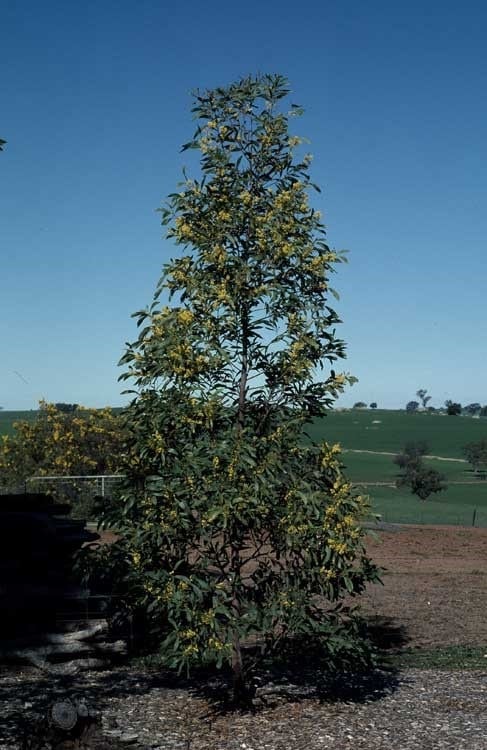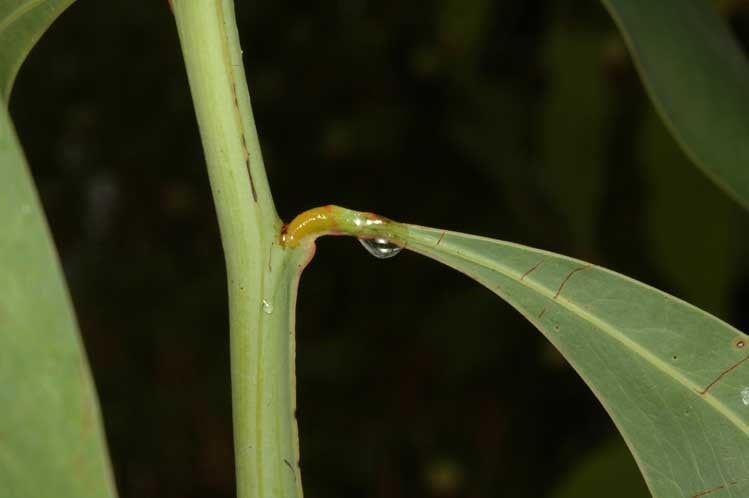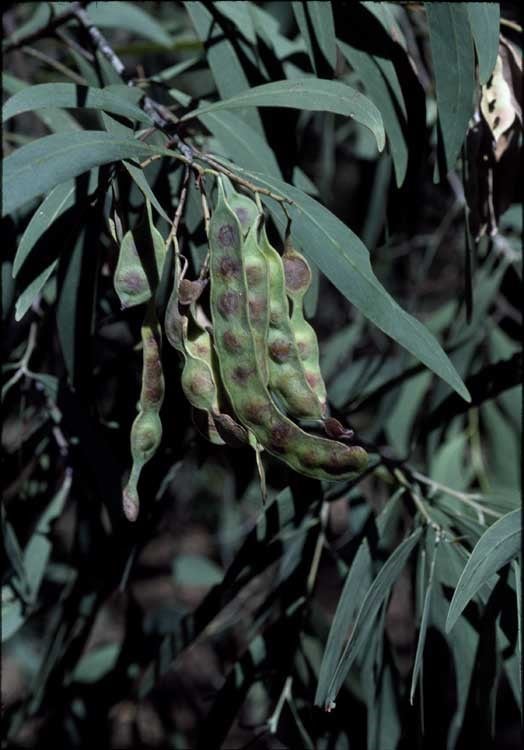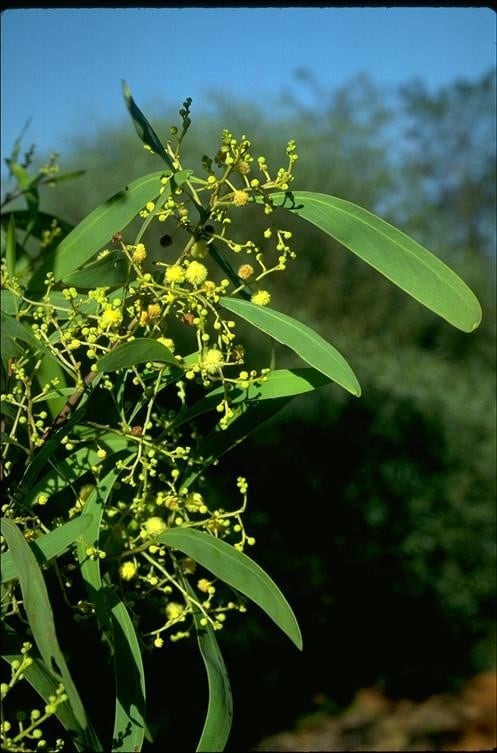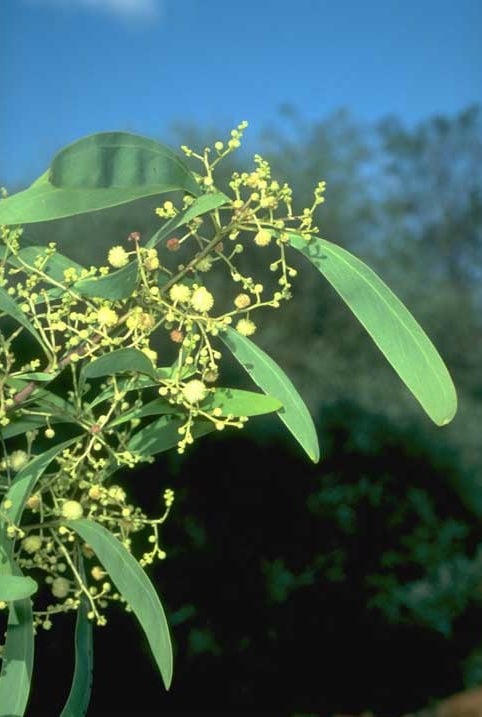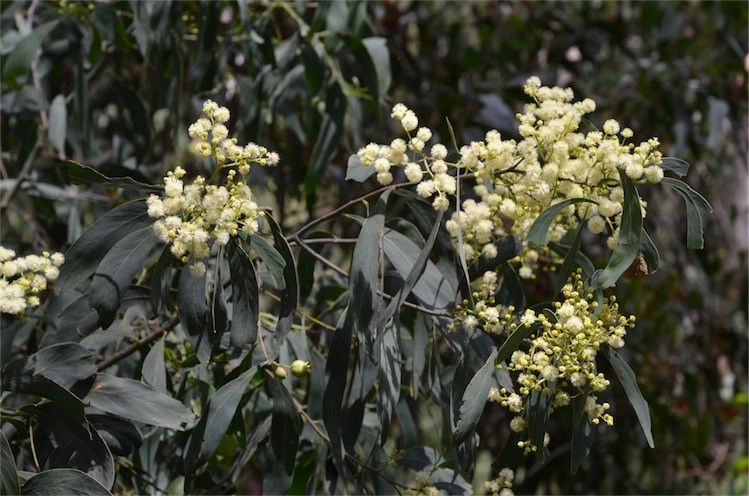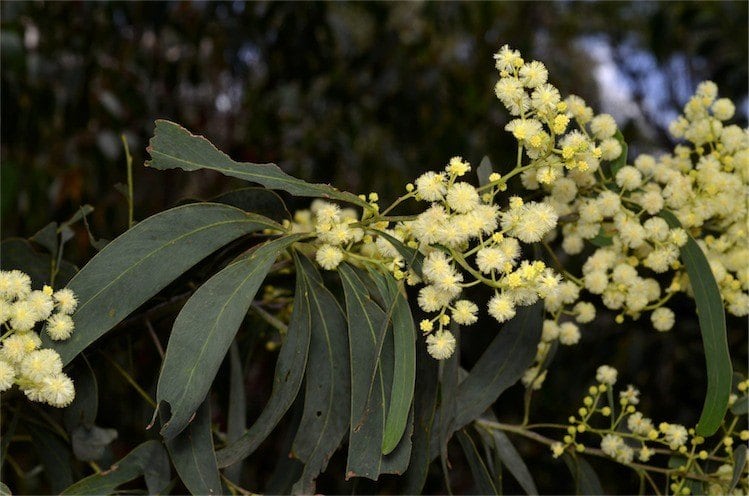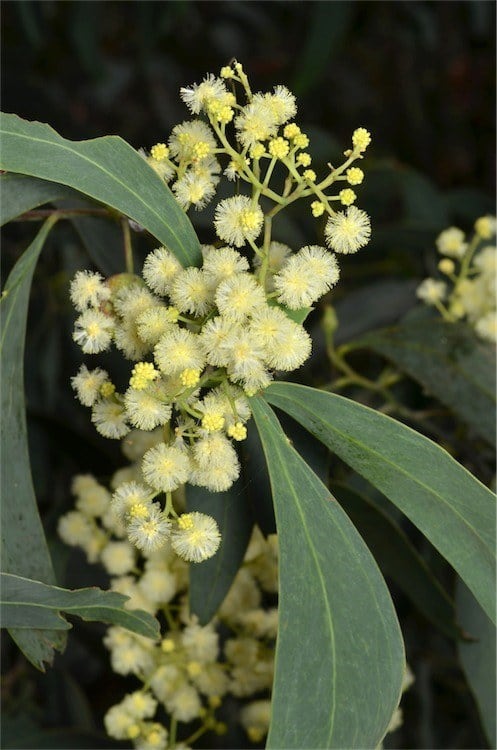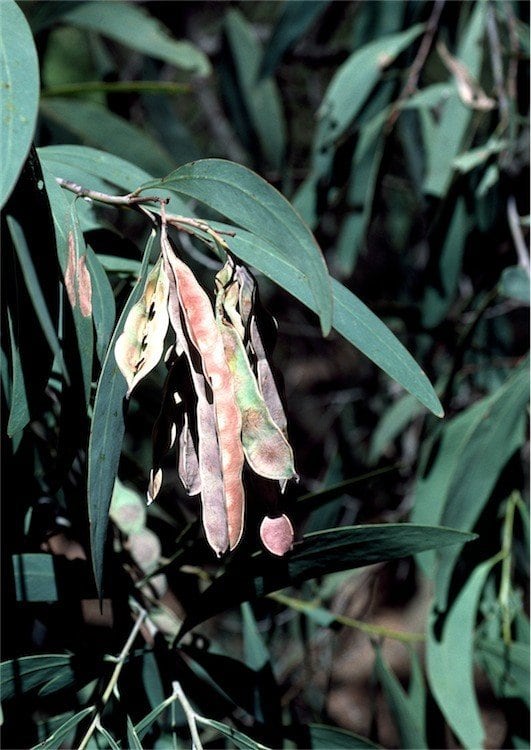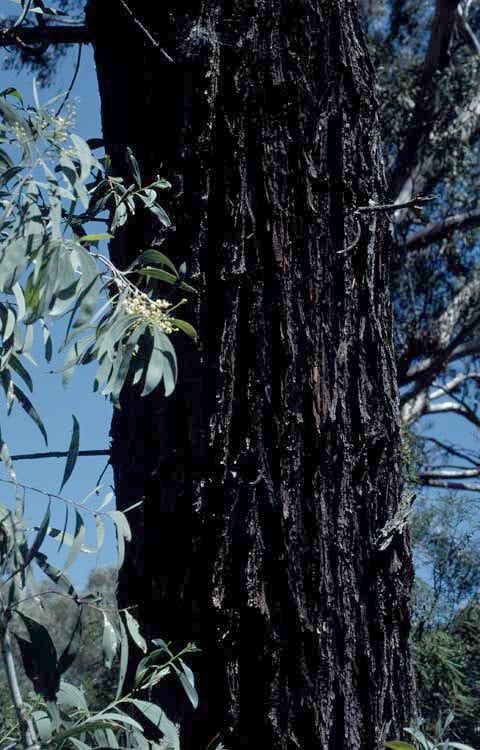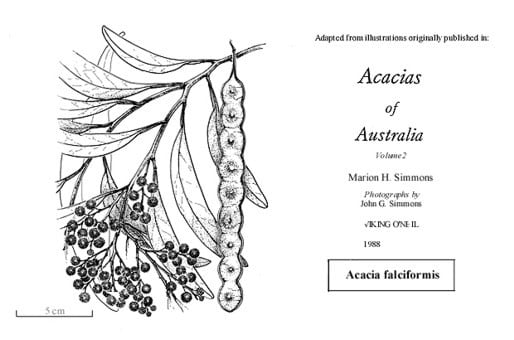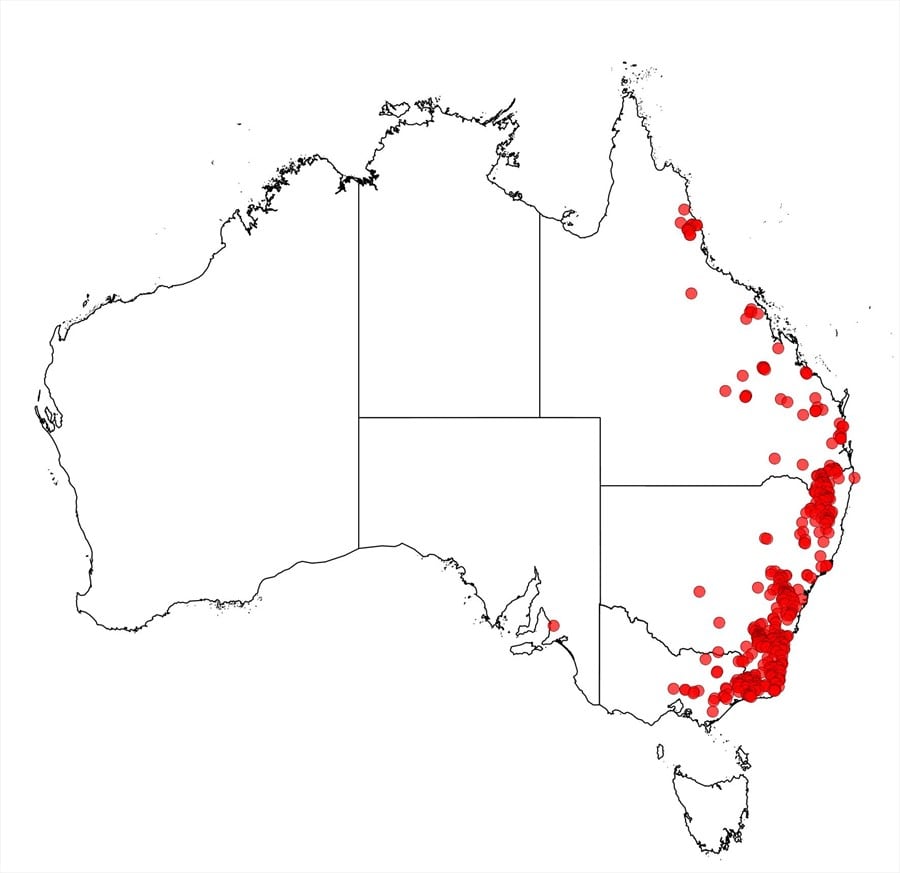Acacia falciformis DC.
WATTLE
Acacias of Australia
Common Name
Mountain Hickory, Broad-leaved Hickory, (Pale) Hickory Wattle, Black Wattle, Tanning Wattle, Large-leaf Hickory Wattle
Family
Fabaceae
Distribution
Common on tablelands and slopes of the Great Divide, mostly at 800 m to 1200 m alt., from near Traralgon, Vic., N through N.S.W. and A.C.T. to Warwick, Qld; extending to the Atherton Tableland, Qld, but discontinuous and uncommon N of Warwick, fide L.Pedley, Austrobaileya 1: 267 (1980). The Qld distribution is similar to that of A. falcata and A. fimbriata.
Description
Shrub or tree to 12 m high, sometimes taller. Branchlets glabrous. Phyllodes ±pendulous, usually falcate, 8–24 cm long, (1.2–) 1.5–3 (–4) cm wide, narrowed at base, grey-green to glaucescent, glabrous, with prominent midrib, finely penninerved; gland 5–30 mm above pulvinus; margin indented at gland which is connected to midrib by a fine oblique nerve. Inflorescences 5–18-headed racemes, sometimes in terminal panicles; raceme axes 2–10 cm long, usually yellow appressed-puberulous at least near apices; peduncles (3–) 4–8 (–10) mm long, usually yellow appressed-puberulous; heads globular, (13–) 20–30-flowered, creamy yellow or sometimes bright yellow. Flowers 5-merous; sepals united. Pods mostly 5–13 cm long and 15–25 mm wide, thinly coriaceous, slightly pruinose, glabrous. Seeds longitudinal, oblong to ±elliptic, 5.5–7 mm long, slightly shiny, black; funicle thickly filiform, often folded below seed, dark reddish brown; aril clavate.
Habitat
Grows in clay loam in sclerophyll forest or woodland.
Specimens
Qld: Salvator Rosa Natl Park, M.E.Ballingall 2169 (BRI, PERTH); near Herberton, J.Moriarty 258 (PERTH). N.S.W.: 35 km SSE of Braidwood, M.D.Crisp 4670 (PERTH). A.C.T.: eastern slopes of Brindabella Ra. above Upper Cotter Dam, R.D.Hoogland 8438 (A n.v., CANB, K n.v., L n.v., MEL, NSW). Vic.: 4.8 km N of Buchan on Gelantipy road, E.F.Constable 5376A (MEL, PERTH).
Notes
Acacia falciformis is usually distinguished from related species with large, falcately recurved phyllodes and broad pods, by its yellow appressed-puberulous raceme axes and peduncles (hairs occasionally white or absent; A. mabellae has similar indumentum but with ±spreading hairs), and phyllodes with their adaxial margin shallowly indented at the gland which is situated 5–30 mm above the pulvinus and connected to the midrib by a fine oblique nerve.
N.T.Burbidge & M.Gray, Fl. Austral. Cap. Terr. 202 (1970), report A. falciformis in the A.C.T. as forming thickets by root suckers following fire or disturbance.
Past confusion between A. falciformis and A. penninervis is discussed by J.H.Maiden, Forest Fl. New South Wales 3: 69-77 (1907), and summarised by L.Pedley, Austrobaileya 1: 269 (1980). Acacia obliquinervia was also formerly confounded with A. falciformis. Phyllodes are sometimes ±mottled pinkish purple upon drying and may resemble those of A. rubida, a species readily distinguished by its commonly persistent juvenile foliage, peduncles normally 2–4 mm long, heads light golden and 10–20-flowered, pods 5–8 mm wide and funicles completely encircling the seeds.
The specimens from northern N.S.W. with oblanceolate, ±straight, shorter than normal phyllodes that were noted by B.R.Maslin, Fl. Australia 11A: 251 (2001), are now included in Acacia sp. New England (J.B.Williams 97011).
The variant from Glasshouse Mtns, Qld, referred to by L.Pedley, Austrobaileya 1: 267 (1980), is probably within the normal range of variation for the species. However, many specimens from further N in Qld are unusual in having the gland located 0–5 mm above the pulvinus and seemingly lacking the oblique nerve to the midrib. These can be confused with A. falcata which is distinguished by its peduncles 3–4 mm long, heads 15–20-flowered, sepals ±free, pods 5–8 mm wide and funicles completely encircling the seeds. Patterns of variation within these Qld populations require further study.
Acacia falciformis appears to hybridise with A. bancroftiorum in the Leichhardt District, Qld.
FOA Reference
Data derived from Flora of Australia Volumes 11A (2001), 11B (2001) and 12 (1998), products of ABRS, ©Commonwealth of Australia
Author
B.R.Maslin
Minor edits by B.R.Maslin & J.Rogers
This identification key and fact sheets are available as a mobile application:
URL: https://apps.lucidcentral.org/wattle/
© Copyright 2018. All rights reserved.

